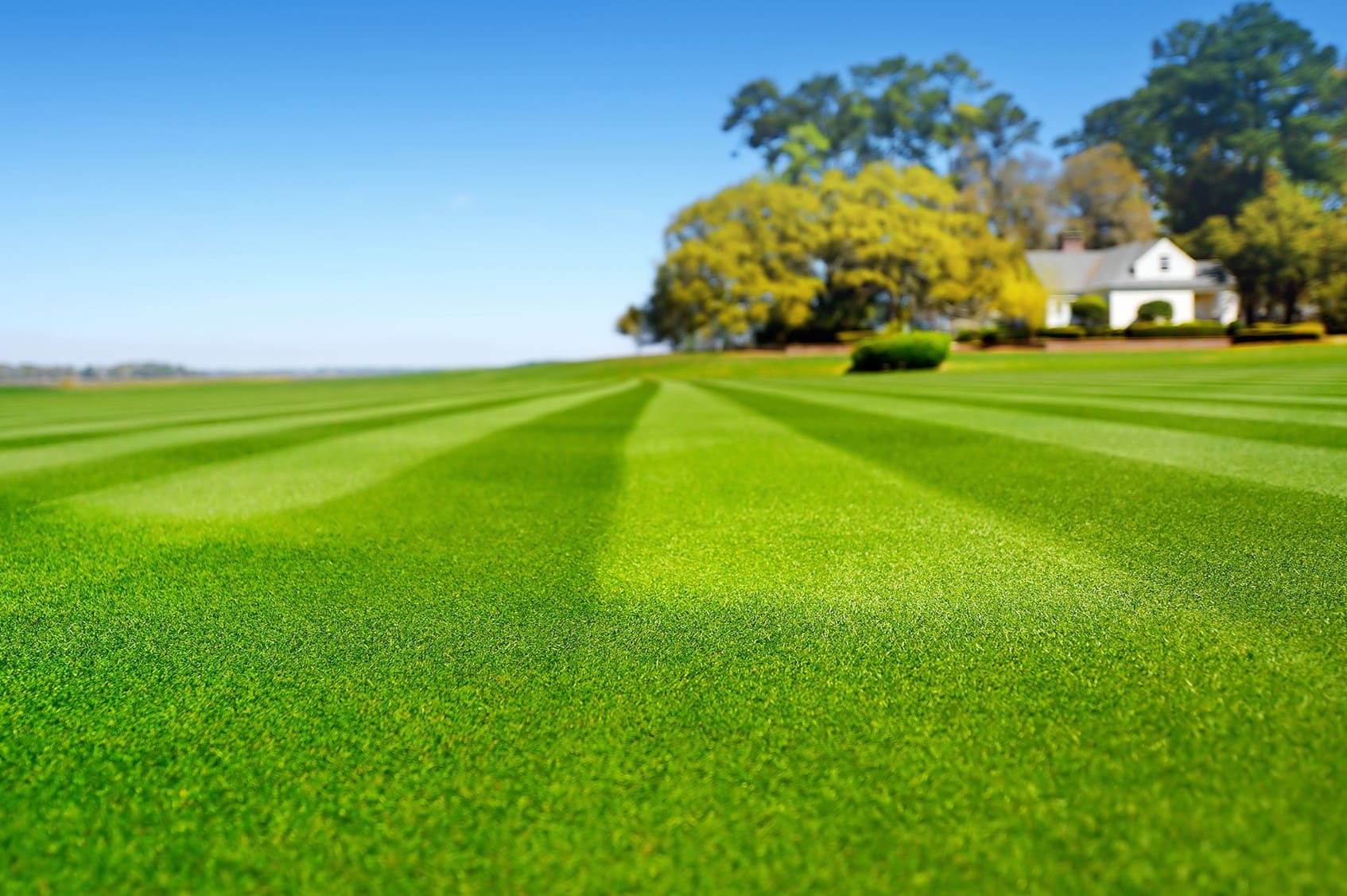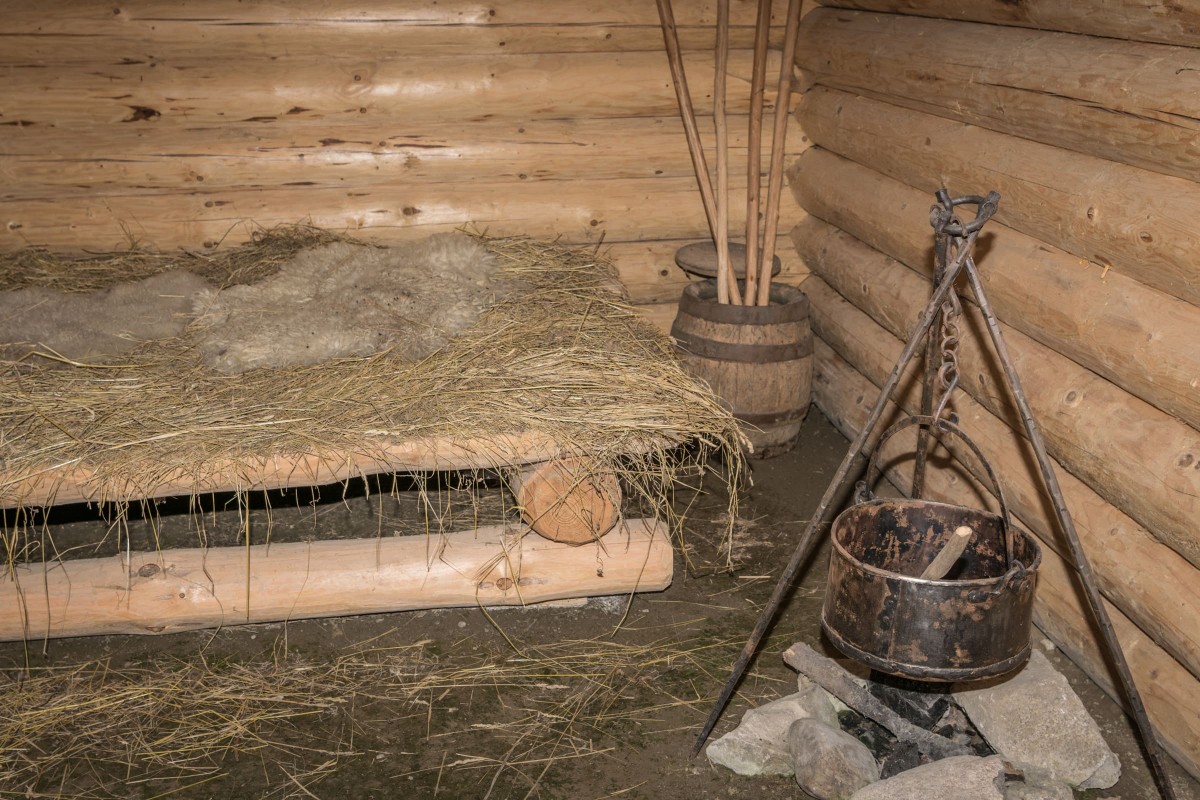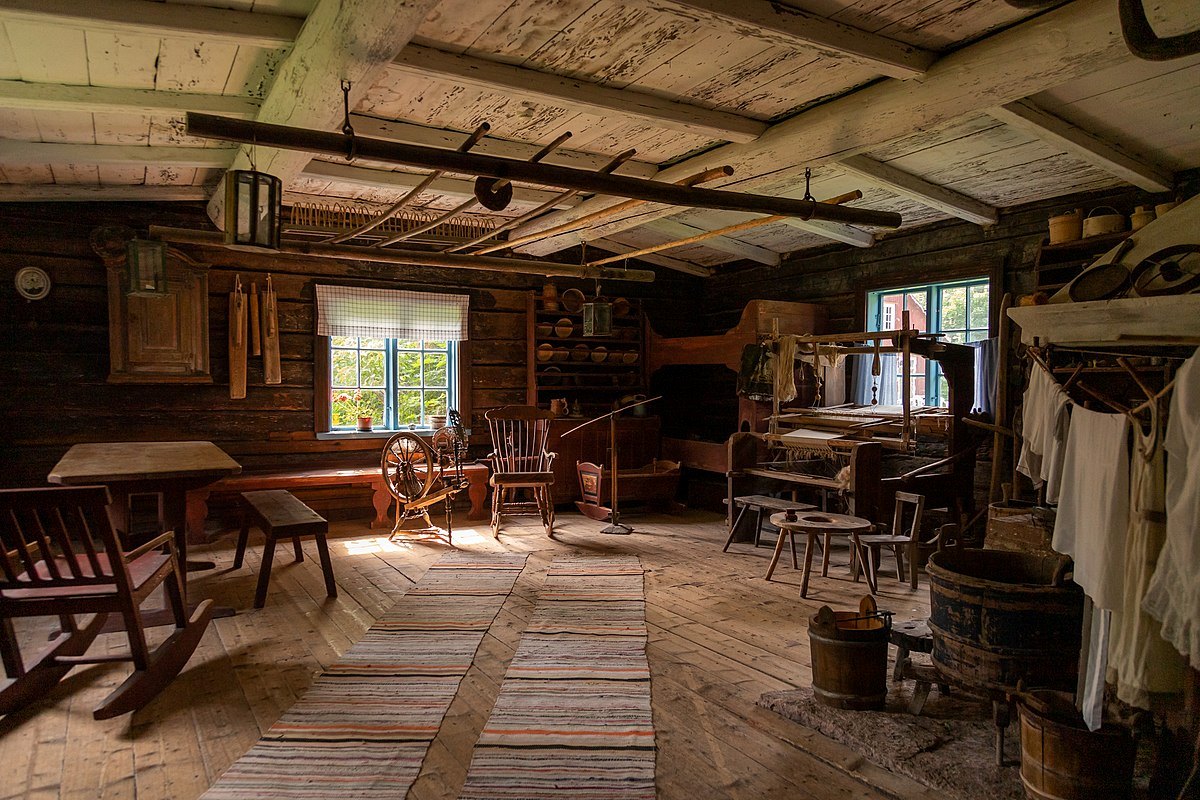Home>Gardening & Outdoor>Landscaping Ideas>Who Invented Grass Lawns


Landscaping Ideas
Who Invented Grass Lawns
Modified: February 18, 2024
Discover the history of grass lawns and the landscaping ideas behind them. Learn about the inventor and the evolution of this popular landscaping feature.
(Many of the links in this article redirect to a specific reviewed product. Your purchase of these products through affiliate links helps to generate commission for Storables.com, at no extra cost. Learn more)
Introduction
Grass lawns have long been a symbol of natural beauty and tranquility, adorning residential and commercial landscapes with their lush greenery. These verdant expanses provide a welcoming setting for outdoor activities, a refreshing respite from urban environments, and a visually appealing backdrop for architectural structures. However, the history of grass lawns is a fascinating journey that spans centuries, encompassing diverse cultures and technological advancements. In this article, we will delve into the intriguing origins and evolution of grass lawns, shedding light on the individuals and innovations that have shaped these iconic features of outdoor spaces.
Key Takeaways:
- Grass lawns have a rich history dating back to ancient civilizations, evolving into iconic features of modern landscapes. They were shaped by visionary individuals and technological innovations, reflecting cultural, social, and environmental shifts.
- The evolution of grass lawns encompasses diverse grass species, sustainable landscaping practices, and technological advancements. It emphasizes the importance of ecological stewardship, community well-being, and harmonious design principles for outdoor spaces.
Read more: Who Pays For Lawn Care In Rental
History of Grass Lawns
The history of grass lawns can be traced back to ancient civilizations, where cultivated green spaces were revered for their aesthetic and practical benefits. In ancient Egypt, for instance, the concept of manicured lawns took root, as evidenced by the lush gardens surrounding the majestic pyramids and palaces. These meticulously tended expanses served as gathering places for social and ceremonial activities, reflecting the Egyptians’ appreciation for natural beauty and outdoor leisure.
Similarly, in ancient Persia, the notion of ornamental lawns flourished, with intricate irrigation systems enabling the cultivation of lush grassy areas within arid landscapes. The Persian tradition of creating paradisiacal gardens, known as “pairidaeza,” influenced the development of formal gardens in various cultures, including the renowned terraced gardens of Babylon.
During the medieval era in Europe, grass lawns became synonymous with aristocratic estates and monastic gardens. The expansive lawns surrounding grand castles and manor houses served as settings for leisurely pursuits, such as hunting, feasting, and theatrical performances. Meanwhile, monasteries maintained verdant cloisters and herb gardens, where cultivated grasses provided a serene backdrop for contemplation and prayer.
As European colonization spread across the globe, the cultivation of grass lawns gained prominence in the New World. In the United States, the concept of the “white picket fence” and the manicured front lawn became emblematic of the American Dream, representing prosperity, suburban living, and community pride.
Throughout history, the perception of grass lawns has evolved, reflecting cultural, social, and environmental shifts. From the opulent gardens of ancient civilizations to the meticulously maintained lawns of modern suburban neighborhoods, the allure of lush, green grass has endured as a timeless expression of natural splendor and human ingenuity.
The Invention of Grass Lawns
The advent of grass lawns as we recognize them today can be attributed to the pioneering efforts of individuals who sought to transform outdoor spaces into captivating landscapes. One such trailblazer was “Capability” Brown, an influential landscape architect in 18th-century England. Brown’s visionary approach to garden design revolutionized the concept of the English garden, integrating expansive grassy lawns with strategically placed trees, serpentine lakes, and rolling topography. His innovative style, characterized by naturalistic compositions and sweeping vistas, set a new standard for estate landscaping and influenced the development of public parks and urban green spaces.
Another pivotal figure in the evolution of grass lawns was Edwin Budding, an English engineer who invented the lawnmower in 1830. Prior to Budding’s invention, maintaining grassy areas required labor-intensive methods, such as scything or grazing animals. The mechanized lawnmower, powered by human or animal traction, revolutionized lawn care by enabling efficient grass cutting and grooming. This technological breakthrough facilitated the widespread establishment of manicured lawns, making them more accessible to homeowners and institutions alike.
During the Victorian era, the cultivation of grass lawns gained prominence as a symbol of status and refinement. The emergence of suburban living and the rise of the middle class fueled the popularity of front and back gardens adorned with neatly trimmed lawns. This cultural shift was reinforced by horticultural societies and gardening publications, which promoted the ideals of lawn maintenance and ornamental landscaping.
Simultaneously, the development of grass species suitable for lawns contributed to the diversification of turfgrasses used in landscaping. Innovations in grass breeding and horticulture led to the selection and cultivation of grass varieties prized for their resilience, texture, and color. This diversification allowed for tailored lawn compositions that could thrive in varying climates and soil conditions, further enriching the aesthetic and functional appeal of grass lawns.
As the 20th century unfolded, the proliferation of suburban developments and the advent of leisure culture solidified the association of grass lawns with domestic bliss and outdoor recreation. The evolution of lawn care equipment, irrigation systems, and fertilization techniques further facilitated the maintenance and enhancement of grass lawns, cementing their role as integral elements of residential and commercial landscapes.
Through the visionary contributions of landscape architects, innovators, and horticulturalists, the invention and evolution of grass lawns have left an indelible mark on the outdoor environment, shaping the way we interact with and appreciate natural spaces.
The concept of grass lawns dates back to the 16th century in England, where they were first popularized by wealthy landowners. The modern lawn mower was invented in 1830 by Edwin Budding, which helped make grass lawns more accessible to the general public.
Evolution of Grass Lawns
The evolution of grass lawns reflects a dynamic interplay of cultural, technological, and environmental factors that have shaped the way we perceive and cultivate outdoor landscapes. From their origins as emblematic features of elite estates to their widespread integration into urban and suburban environments, grass lawns have undergone a remarkable transformation, adapting to changing societal values and ecological considerations.
One significant aspect of the evolution of grass lawns lies in the diversification of grass species used in landscaping. Historically, grass lawns predominantly featured cool-season grasses such as Kentucky bluegrass and fescue varieties, prized for their lush appearance and adaptability to temperate climates. However, the demand for low-maintenance and drought-tolerant landscapes has spurred the integration of warm-season grasses like Bermuda grass and zoysia grass, which thrive in regions with hot summers and limited water resources. This diversification has broadened the palette of grass species available to landscapers, allowing for tailored lawn compositions that harmonize with local climate conditions and water conservation efforts.
Moreover, the advent of sustainable landscaping practices has prompted a reevaluation of traditional lawn maintenance approaches. The concept of “naturalized” or “wild” lawns has gained traction, advocating for the integration of native grasses and wildflowers into lawn areas to support local biodiversity and reduce the need for chemical inputs. This shift toward ecologically conscious lawn management reflects a growing awareness of the environmental impact of conventional turf care practices and a commitment to fostering resilient, habitat-friendly landscapes.
Technological advancements have also played a pivotal role in the evolution of grass lawns. Innovations in irrigation systems, such as smart controllers and drip irrigation, have enhanced water efficiency and precision in lawn watering, mitigating the strain on freshwater resources and promoting sustainable landscape stewardship. Additionally, the development of electric and battery-powered lawn mowers, trimmers, and leaf blowers has facilitated the transition toward quieter, emission-free lawn care equipment, aligning with the principles of eco-friendly landscaping.
Furthermore, the concept of multifunctional lawns has gained prominence, emphasizing the versatile role of grassy areas as spaces for recreation, relaxation, and ecological value. Integrating permeable pavers, rain gardens, and native plantings within lawn spaces exemplifies a holistic approach to landscape design, fostering ecological resilience and enhancing the aesthetic and functional diversity of outdoor environments.
As we navigate the 21st century, the evolution of grass lawns continues to be shaped by a commitment to sustainable, regenerative landscapes that prioritize environmental stewardship and community well-being. The integration of smart technologies, alternative lawn care practices, and ecological design principles heralds a new era in the cultivation of grass lawns, one that harmonizes with the natural world and enriches the human experience of outdoor spaces.
Conclusion
The story of grass lawns is a testament to the enduring allure of natural landscapes and the ingenuity of individuals who have shaped outdoor environments throughout history. From their origins as opulent garden features to their integration into modern urban and suburban settings, grass lawns have evolved in response to cultural, technological, and environmental dynamics, embodying both tradition and innovation.
As we reflect on the history and evolution of grass lawns, it becomes evident that these verdant expanses are more than mere embellishments of the outdoor environment. They serve as communal gathering spaces, havens for biodiversity, and canvases for artistic expression, enriching the fabric of human experience and ecological interconnectedness.
Looking ahead, the future of grass lawns is poised to embrace sustainable practices, diverse ecological functions, and inclusive design principles that honor the intrinsic beauty of natural landscapes. The integration of native grasses, water-wise landscaping, and regenerative lawn care approaches represents a paradigm shift toward resilient, biodiverse lawn ecosystems that harmonize with the natural world and contribute to the well-being of communities.
Ultimately, the legacy of grass lawns transcends their ornamental appeal, embodying a profound connection to the land and a shared commitment to stewarding our outdoor spaces with reverence and innovation. As we continue to cultivate and cherish grass lawns, we honor the rich tapestry of history, culture, and environmental stewardship that defines these iconic elements of the outdoor landscape.
May the evolution of grass lawns inspire us to embrace sustainable, inclusive, and harmonious approaches to landscape design, fostering landscapes that reflect the beauty of nature and the resilience of the human spirit.
Frequently Asked Questions about Who Invented Grass Lawns
Was this page helpful?
At Storables.com, we guarantee accurate and reliable information. Our content, validated by Expert Board Contributors, is crafted following stringent Editorial Policies. We're committed to providing you with well-researched, expert-backed insights for all your informational needs.
















0 thoughts on “Who Invented Grass Lawns”